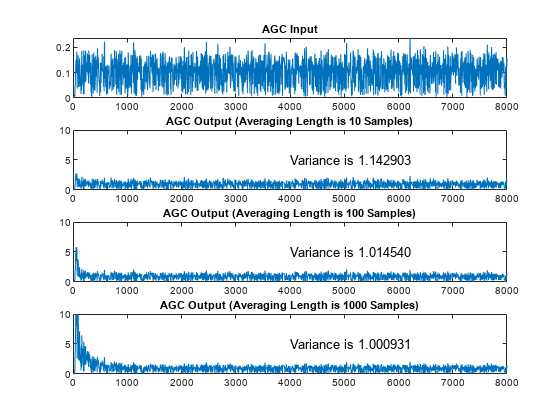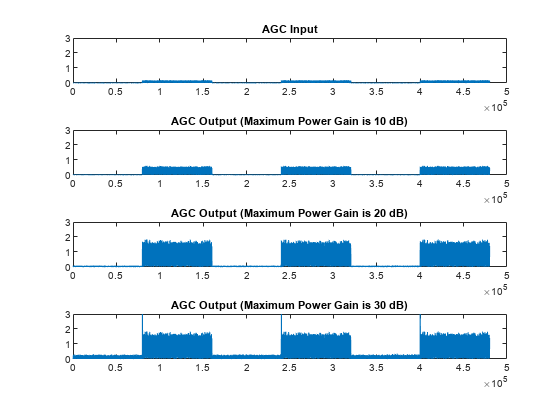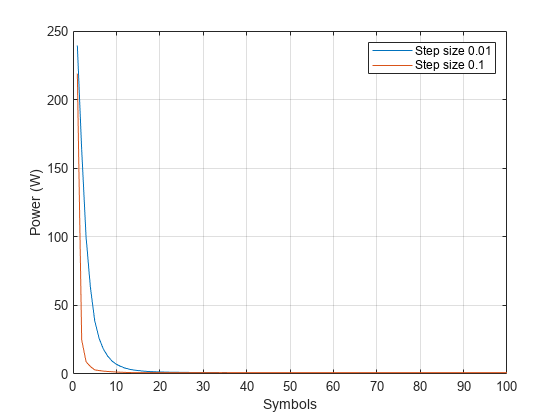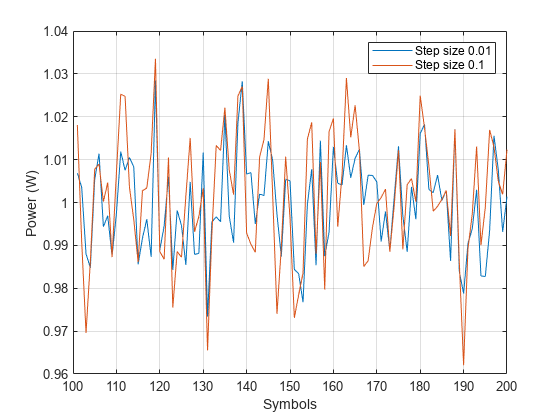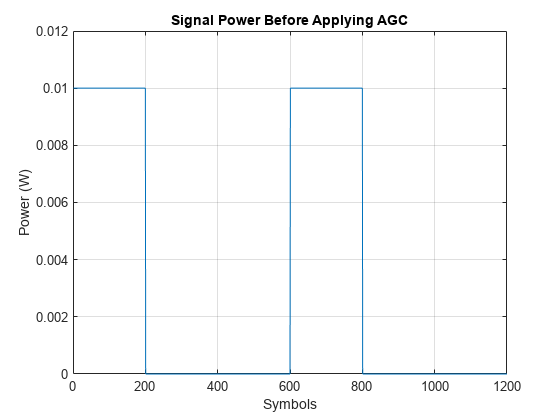comm.AGC
Adaptively adjust gain for constant signal level output
Description
The comm.AGC
System object™ creates an automatic gain controller (AGC) that adaptively adjusts its
gain to achieve a constant signal level at the output. For more information, see Logarithmic-Loop AGC.
This object is designed for streaming applications. For more information, see Tips.
To adaptively adjust gain for a constant signal level at the output:
Create the
comm.AGCobject and set its properties.Call the object with arguments, as if it were a function.
To learn more about how System objects work, see What Are System Objects?
Creation
Description
agc = comm.AGC
agc = comm.AGC(Name,Value)AdaptationStepSize',0.05 sets the step size
for gain updates to 0.05.
Properties
Usage
Description
Y = agc(X)
[
returns Y,powerlevel] = agc(X)powerlevel, the power level estimate of the input
signal. You can use powerlevel as an energy detector
output.
Input Arguments
Output Arguments
Object Functions
To use an object function, specify the
System object as the first input argument. For
example, to release system resources of a System object named obj, use
this syntax:
release(obj)
Examples
More About
Tips
This System object is designed for streaming applications.
If the signal amplitude does not change within the frame, you can simulate an ideal AGC by calculating the average gain desired for a frame of samples. Then, apply the gain to each sample in the frame.
If you use the AGC with higher order QAM signals, you might need to reduce the variation in the gain during steady-state operation. Inspect the constellation diagram at the output of the AGC during steady-state operation. You can increase the averaging length to avoid frequent gain adjustments. An increase in averaging length reduces execution speed.
Extended Capabilities
Version History
Introduced in R2013a
